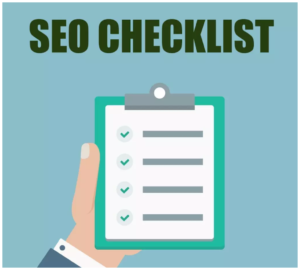YouTube SEO has become increasingly sophisticated as the platform evolves, making it essential for creators and marketers to stay ahead of the curve. optimizing your YouTube content involves a strategic approach to enhance visibility, engagement, and overall channel growth. This guide will walk you through the fundamentals of YouTube SEO, explain how it works, highlight its importance, and provide you with 13 essential tips and 7 useful tools to master YouTube SEO.
What is YouTube SEO?
YouTube SEO (Search Engine Optimization) refers to the process of optimizing your YouTube videos and channel to increase their visibility in search results and recommendations. It involves optimizing various elements of your videos, such as titles, descriptions, tags, thumbnails, and engagement metrics, to help YouTube’s algorithm understand and rank your content effectively.
Key Components of YouTube SEO:
- Keywords: Specific words or phrases that users search for. Including relevant keywords helps YouTube categorize and rank your video.
- Titles: Descriptive and engaging titles that incorporate primary keywords.
- Descriptions: Detailed summaries that provide context and include keywords to enhance relevance.
- Tags: Keywords that help YouTube understand the content and context of your video.
- Thumbnails: Custom images that attract clicks and provide a visual preview of the video content.
- Engagement Metrics: Indicators such as watch time, likes, comments, and shares that signal the value and relevance of your video.
How Does SEO on YouTube Work?
YouTube’s algorithm uses various factors to determine how to rank videos in search results and recommendations. Understanding these factors can help you optimize your content more effectively.
Factors Influencing YouTube SEO:
- Relevance: YouTube evaluates how well your video matches the search query based on the keywords in your title, description, and tags. The algorithm also considers the content of the video itself.
- Engagement: Metrics such as likes, comments, shares, and watch time play a crucial role in ranking. Higher engagement signals to YouTube that your content is valuable and worth promoting.
- Watch Time: This measures the total amount of time viewers spend watching your video. Videos with higher watch times are favored by YouTube’s algorithm because they indicate that the content is engaging and useful.
- Click-Through Rate (CTR): The percentage of viewers who click on your video after seeing the thumbnail and title. A higher CTR indicates that your thumbnail and title are compelling and relevant.
- Audience Retention: This measures how long viewers stay on your video. Higher audience retention rates suggest that viewers find your content engaging throughout its duration.
- User Interaction: Includes factors such as the frequency of likes, comments, and shares. Active engagement by users helps boost your video’s visibility.
- Video Metadata: The information associated with your video, including the title, description, tags, and captions. Properly optimized metadata helps YouTube understand the content and context of your video.
Why is YouTube SEO Important?
Effective YouTube SEO is vital for several reasons:
- Increased Visibility: Optimizing your videos helps them appear in search results and recommendations, increasing their visibility and potential reach.
- Higher Engagement: Well-optimized videos are more likely to attract likes, comments, and shares, leading to higher engagement metrics.
- Growth of Subscriber Base: Enhanced visibility and engagement can lead to more subscribers, helping to grow your channel.
- Competitive Advantage: Implementing effective SEO strategies can give you an edge over competitors, making it easier for your content to stand out in a crowded marketplace.
- Improved User Experience: SEO helps ensure that your videos are relevant and valuable to viewers, enhancing their overall experience on the platform.
How to Do YouTube SEO: 13 Essential Tips
Mastering YouTube SEO involves applying a combination of strategies to optimize various aspects of your videos and channel. Here are 13 essential tips to help you achieve better results:
#1. Conduct Keyword Research
Keyword research is the foundation of effective YouTube SEO. Identify the terms and phrases your target audience is searching for and incorporate them into your video content.
- Use Tools: Utilize tools like Google Keyword Planner, TubeBuddy, and VidIQ to find relevant keywords.
- Analyze Competitors: Look at successful videos in your niche to identify keywords they are targeting.
#2. Optimize Video Titles
Your video title is crucial for attracting clicks and improving search rankings.
- Include Primary Keywords: Incorporate your main keywords at the beginning of the title.
- Make It Engaging: Use compelling language and create a sense of urgency or curiosity.
#3. Craft Effective Descriptions
The description provides context and helps YouTube understand your video’s content.
- Use Keywords Early: Incorporate primary keywords in the first few sentences.
- Provide a Summary: Explain what the video is about, including key points and topics.
- Add Links and Timestamps: Include links to related content and timestamps for longer videos.
#4. Use Tags Wisely
Tags help categorize your video and improve discoverability.
- Mix Broad and Specific Tags: Include a combination of general and niche-specific tags.
- Avoid Over-Tagging: Use a reasonable number of tags (around 10-15) that are relevant to your video.
#5. Create Compelling Thumbnails
Thumbnails are essential for attracting viewers and improving click-through rates.
- Use High-Quality Images: Ensure your thumbnail is clear and visually appealing.
- Add Text Overlay: Use large, readable fonts and contrasting colors to highlight key points.
- Include Faces: Thumbnails with human faces often attract more attention.
#6. Enhance Engagement Metrics
Engagement metrics are crucial for ranking and visibility.
- Encourage Interaction: Ask viewers to like, comment, and share your videos.
- Respond to Comments: Engage with your audience by replying to comments.
#7. Utilize Playlists
Playlists help organize your content and increase watch time.
- Group Related Videos: Create playlists based on specific themes or topics.
- Optimize Playlist Titles and Descriptions: Use keywords and provide a clear overview.
#8. Leverage End Screens and Cards
End screens and cards promote other content and encourage viewer interaction.
- Promote Related Videos: Use end screens and cards to direct viewers to other videos or playlists.
- Include Calls to Action: Encourage viewers to subscribe or visit your website.
#9. Improve Watch Time
Higher watch time indicates valuable content and boosts rankings.
- Create Engaging Content: Ensure your videos are informative and entertaining.
- Optimize Video Length: Find the right balance between providing value and maintaining viewer interest.
#10. Enhance Audience Retention
Maintaining viewer interest throughout your video is essential.
- Create a Strong Hook: Capture attention early with a compelling introduction.
- Maintain a Clear Structure: Organize your video content logically and keep it engaging.
#11. Add Subtitles and Captions
Subtitles and captions improve accessibility and can boost engagement.
- Include Keywords: Add relevant keywords to subtitles and captions to enhance discoverability.
- Ensure Accuracy: Provide accurate and well-timed captions.
#12. Optimize Video Metadata
Properly optimized metadata helps YouTube understand your video content.
- Use Descriptive Titles and Tags: Incorporate relevant keywords and provide clear descriptions.
- Add Relevant Categories: Choose appropriate categories to help YouTube categorize your content.
#13. Monitor and Adjust Based on Performance
Regularly analyze your video performance and adjust your strategy accordingly.
- Use YouTube Analytics: Track metrics like watch time, CTR, and audience retention.
- Make Data-Driven Decisions: Adjust your SEO strategies based on performance insights.
7 Tools You Can Use for YouTube SEO
Several tools can assist you in optimizing your YouTube content and channel. Here are seven essential tools to consider:
1. TubeBuddy: TubeBuddy is a browser extension that offers a suite of features to help with YouTube SEO, including keyword research, tag suggestions, and competitor analysis.
- Features: Keyword research, SEO suggestions, tag management, A/B testing.
- Free Plan: Basic features are available for free.
2. VidIQ: VidIQ provides insights and tools for optimizing YouTube videos, including keyword research, SEO recommendations, and performance analytics.
- Features: Keyword research, video analytics, SEO score, competitor tracking.
- Free Plan: Basic features are available for free.
3. Google Keyword Planner: Google Keyword Planner helps identify relevant keywords and provides search volume data, which can be useful for YouTube keyword research.
- Features: Keyword suggestions, search volume data, competition analysis.
- Free Plan: Free to use with a Google Ads account.
4. Canva: Canva is a graphic design tool that helps create eye-catching thumbnails and channel art.
- Features: Thumbnail templates, custom graphics, text overlays.
- Free Plan: Basic features are available for free.
5. Social Blade: Social Blade tracks YouTube channel growth and provides insights into rankings and performance.
- Features: Channel analytics, growth trends, competitor analysis.
- Free Plan: Basic analytics are available for free.
6. YouTube Analytics: YouTube Analytics provides detailed insights into video performance, audience behavior, and engagement metrics.
- Features: Watch time, CTR, audience retention, traffic sources.
- Free Plan: Available to all YouTube creators.
7. Keyword Tool: Keyword Tool is an online tool for generating keyword ideas based on search volume and competition, useful for YouTube keyword research.
- Features: Keyword suggestions, search volume data, competition analysis.
- Free Plan: Basic features are available for free.
Conclusion
YouTube SEO involves a comprehensive approach to optimizing various aspects of your videos and channel. By understanding how YouTube’s algorithm works and applying the essential tips outlined in this guide, you can improve your video’s visibility, attract more viewers, and grow your channel.
Utilize the recommended tools to streamline your SEO efforts and stay ahead of the competition. Remember, effective YouTube SEO requires continuous monitoring and adaptation based on performance data and evolving trends. With the right strategies and tools, you can achieve significant success on YouTube and maximize the impact of your content.
Frequently Asked Questions (FAQs)
What are the best practices for YouTube video titles?
Create titles that include primary keywords, are clear and engaging, and accurately reflect the content of the video. Aim for titles that are 60-70 characters long.
How often should I post new videos on YouTube?
Consistency is key. Aim to upload videos on a regular schedule, such as weekly or bi-weekly, to keep your audience engaged and improve channel performance.
Can I update my video’s title or description after it’s been published?
Yes, you can update titles, descriptions, and tags after publishing. Regularly review and optimize these elements based on performance data and keyword research.
How important are video tags for YouTube SEO?
Tags help categorize your content and improve discoverability. Use a mix of broad and specific tags that accurately describe your video, but avoid over-tagging.
What role do thumbnails play in YouTube SEO?
Thumbnails are crucial for attracting clicks and improving CTR. Create custom thumbnails that are visually appealing and accurately represent your video content.
How can I increase watch time on my videos?
Create engaging content that retains viewer interest, use compelling intros, and add end screens and cards linking to other videos or playlists.
What are end screens and cards, and how do they help with SEO?
End screens and cards are interactive elements that promote other content on your channel. They drive traffic to additional videos and increase overall watch time, which can boost SEO.
How can I use YouTube Analytics to improve my SEO strategy?
YouTube Analytics provides insights into video performance, including watch time, CTR, and audience retention. Use this data to understand what works, identify trends, and make data-driven decisions to optimize your SEO strategy.
What are some common mistakes to avoid in YouTube SEO?
Avoid neglecting keyword research, using misleading titles, over-tagging, and failing to engage with viewers. Conduct thorough research, optimize all elements of your video, and actively interact with your audience.
How can I stay updated with changes in YouTube’s algorithm?
Stay informed about algorithm changes by following industry news, participating in online forums, and reviewing YouTube’s official resources and updates. Adapt your strategies based on the latest trends and changes in the algorithm.
By implementing these strategies and utilizing the recommended tools, you can enhance your YouTube SEO efforts and achieve greater success on the platform.
Happy optimizing!




